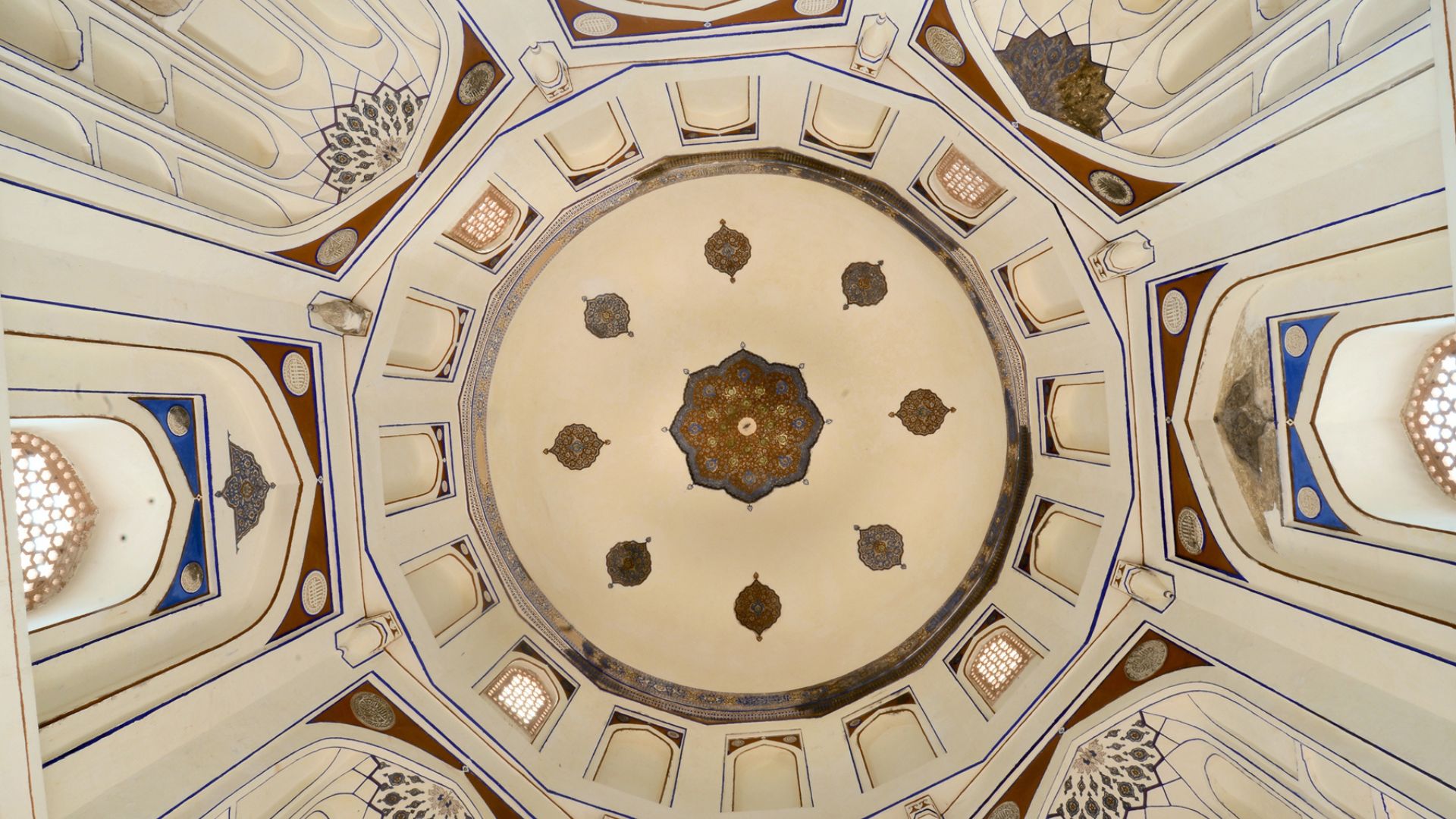The Aga Khan Trust for Culture, with the support of the U.S. Ambassadors Fund for Cultural Preservation, has restored the Batashewala Mughal Tomb Complex in New Delhi to its old glory.
May 2017

The interior of the dome of the “Unknown” Mughal Tomb after restoration. (Courtesy Aga Khan Trust for Culture)
The 16th-century Batashewala Mughal Tomb Complex in New Delhi, an architectural wonder almost lost to neglect and decay, has been renewed and preserved for generations to come. A restoration project carried out by the Aga Khan Trust for Culture (AKTC), a private philanthropic foundation, has resulted in the complex winning inclusion in the buffer zone of the UNESCO World Heritage Site of the Humayun’s Tomb.
“This is the most significant outcome that could ever have been expected,” says Ratish Nanda, an architect and conservationist who is the chief executive at AKTC, India. “Never before has any World Heritage Site in India been given expansion in this manner.”
The innovative three-year project, for which $750,000 (Rs. 5 crores approximately) in funding was provided to AKTC by the U.S. Ambassadors Fund for Cultural Preservation (AFCP) of the U.S. State Department, included urgent repairs that required major masonry stabilization and conservation work to restore the site’s historical and architectural integrity. AKTC simultaneously undertook garden restoration, and bore technical and project management costs.
The three monuments in the complex—the Bara Batashewala Mahal, Chota Batashewala Mahal and the “Unknown” Mughal Tomb—were granted World Heritage recognition by UNESCO in 2016. Another inclusion within the expanded World Heritage Site was the 16th-century Sundar Burj—also conserved by AKTC with funds from the AFCP in 2011.
Situated north of the Humayun’s Tomb World Heritage Site, the Batashewala complex is in the Nizamuddin area of New Delhi, which has been in continuous existence since the early 14th century. Within its neighborhood is the famous dargah (shrine) of Sufi saint Hazrat Nizamuddin Auliya. Since it is considered auspicious to be buried in the vicinity of a saint’s tomb, there was a profusion of tomb building in this area over the last seven centuries, resulting in a site of major national importance.
“The three tombs are all garden tombs, as is the Humayun’s Tomb,” explains Nanda. “Therefore, their conservation and preservation are critical to a unique ensemble of Mughal-era garden tombs. The conservation effort has also led to a greater understanding of the larger Nizamuddin area and that this comprised an ensemble of 16th-century garden tombs.”

Geometric patterns in incised plaster-work were restored, where missing or damaged, by master craftsmen using traditional tools, materials and techniques that would have been used by the Mughal-era builders. (Courtesy Aga Khan Trust for Culture)
Another important aspect of the project was the fostering of traditional building craftsmanship. This was required to reverse the effect of the earlier restoration efforts carried out with modern materials like cement, which had actually damaged several structures. The site had also suffered from years of neglect during which various structures deteriorated.
“We understood from the outset that we wanted to utilize the skills of traditional master craftsmen—masons, stone carvers, ceramic tile makers, carpenters—to replicate the works of their forefathers using traditional materials, traditional tools and building crafts,” says Nanda. This approach resulted in more than 100,000 man-days of work for master craftsmen in the area. According to Nanda, AKTC aims to leverage cultural assets to improve the quality of life for local communities through specific, direct interventions focused on physical, social and economic revitalization of historic sites in the dozens of countries in which it operates.
The master craftsmen were part of a multidisciplinary team that included architects, engineers, historians and archaeologists. AKTC projects are intended to serve as models within the Indian context and aim to introduce modern technology like 3D laser scanning for documentation of heritage structures in the country.
“Without a sustained archival research program, it would not have been possible to successfully implement these projects,” says Nanda. “Hundreds of archival images were procured from sources across the world. These were useful both in providing details that had gone missing due to structural collapses, and also to ensure that the project did not need to resort to conjecture for any conservation work.”
In addition to integrating modern technology and traditional craftsmanship, Nanda notes the Batashewala project has demonstrated that complex conservation projects requiring multidisciplinary coordination can be accomplished through partnerships between private and public agencies, along with successful fundraising with international and national foundations and corporations. For now, AKTC is the only private agency undertaking conservation work at any of India’s national monuments protected by the Archaeological Survey of India, under the Government of India’s Ministry of Culture.
“The works undertaken here over the past decade have demonstrated that conservation works require a multidisciplinary approach and dedicated funding. They can fulfill several government objectives—employment generation for craftsmen, increased revenues through tourism, improved urban spaces and higher quality of life for local communities,” says Nanda, adding, “hopefully, many more such efforts will be undertaken in India in future years.”
Steve Fox is a freelance writer, former newspaper publisher and reporter based in Ventura, California.
COMMENTS